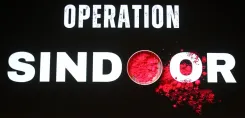What Are the Differences in Paul McCartney and John Lennon's Music Styles?

Synopsis
Key Takeaways
- Paul McCartney and John Lennon had contrasting creative processes.
- McCartney favored structured compositions, while Lennon preferred abstract experimentation.
- Both musicians inspired each other throughout their collaboration.
- McCartney's use of Brunel tape machines showcased his innovative spirit.
- Abstract music can resonate deeply, similar to abstract art.
Los Angeles, July 13 (NationPress) The iconic figures of The Beatles, Sir Paul McCartney and his fellow band member, John Lennon, exhibited strikingly different methods when it came to creating music.
Despite being part of one of the most renowned songwriting duos in history, Paul, now aged 83, openly acknowledged their vastly different approaches, even while they inspired each other's creativity, according to ‘Female First UK’.
In a conversation with Elizabeth Alker on BBC Radio 3’s Sound Sources, he shared, “I was captivated by various people’s work. This fascination led me to explore the idea of using tape loops, prompting me to experiment on my own.”
He elaborated, “I eventually acquired two Brunel tape machines, allowing me to create tape loops by cutting and splicing the tape. For instance, if I used a guitar, I could build layers by repeating notes. People often tell me, ‘You work so hard in music,’ to which I respond, ‘We play music, we don’t work it.’ This notion emerged from my enjoyment of experimenting with these machines, inspired by Stockhausen, the German composer, and the urge to innovate myself. I showed John Lennon one day, and he was intrigued.”
Paul continued, “We would excite each other with whatever new ideas we discovered, saying things like, ‘Listen to this!’ Eventually, John expressed his desire to explore this as well. I got him two Brunels for his home and demonstrated my techniques. The key difference between John and me was my preference for a more controlled approach, as seen in my work on ‘Tomorrow Never Knows’. I aimed to perform within a structured musical framework, while John’s creation ‘Revolution Number Nine’ took a different path. I preferred to anchor my ideas in something more structured, as I believed that layering these elements created the ultimate sound.”
Paul noted that one cannot predict the outcomes of such explorations; sometimes, a seemingly odd piece of music can resonate deeply. “It’s akin to abstract art. Not everything we perceive is clear-cut and literal. Occasionally, in a moment of sleepiness or through a rubbed eye, one sees abstract forms. Our minds comprehend these concepts. The same applies to music,” he added.









